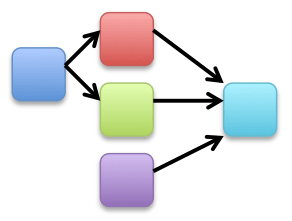How risk and protective factors relate
 In sexual violence prevention, we are pretty sure that (a) societal norms that maintain women’s inferiority and sexual submissiveness and (b) an individual’s hostility toward women are both risk factors for sexual violence perpetration. But does living in a society with these societal norms cause an individual to be hostile toward women? And does being hostile toward women cause an individual to perpetrate sexual violence? We don’t know.
In sexual violence prevention, we are pretty sure that (a) societal norms that maintain women’s inferiority and sexual submissiveness and (b) an individual’s hostility toward women are both risk factors for sexual violence perpetration. But does living in a society with these societal norms cause an individual to be hostile toward women? And does being hostile toward women cause an individual to perpetrate sexual violence? We don’t know.
But it might be helpful for planning prevention programming to make an educated guess. Based on a lot of research, the CDC has identified risk and protective factors that contribute to sexual violence perpetration. But it hasn’t identified how these risk and protective factors relate to each other, and again, that’s because we don’t know. There’s not nearly enough research to say for certain which risk factors cause each other and how they interact to cause someone to perpetrate sexual violence, and in all likelihood, there won’t be for many years to come.
If we think about it, though, we can probably make some pretty good hypotheses based on our experiential and contextual evidence about which factors feed into others. Actually, that’s exactly what we do when we make logic models for our prevention programming. We choose long-term impacts that we want to achieve, which hopefully include the big-picture, community and societal-level risk and protective factors for perpetration of sexual violence. Then we choose medium- or long-term outcomes, which we think feed into those long-term outcomes. Next, we choose short-term outcomes, which we think feed into the longer-term outcomes, and which are hopefully relatively easy to change. There it is: by making a logic model, we’ve hypothesized about how risk and protective factors are linked to each other over time.
So it might help to zoom out a little in the very beginning stages of program planning. We can try to think about all of the risk and protective factors that we think can lead to perpetration, not just the ones we think we want to address in a program. We can start by listing all these factors, including the ones the CDC lists, as well as other factors we think are relevant based on our experience. Then, we can go one step further and figure out how we think they all relate. Words or visuals can help to map out what we think are the causal pathways, or the way risk and protective factors interact to cause sexual violence perpetration.
Mapping out causal pathways can improve program planning in a couple of ways. First of all, you can choose which risk and protective factors you want to try to change based on the whole picture of sexual violence prevention — you can see exactly where your program fits into the whole problem of sexual violence. Second, you might identify some risk and protective factors that are related to your desired outcomes that you might not have noticed before. Finally, you can base your program theory of change (and thus your logic model) on the causal pathway that you’ve already clearly mapped out. That way, it’s clear why you’re addressing the risk and protective factors that you are, and how your program can build on itself from the short to the long term.
